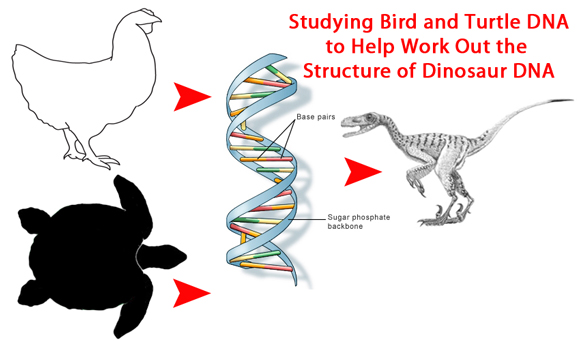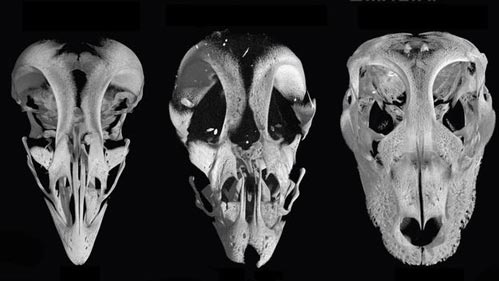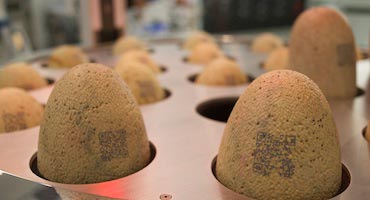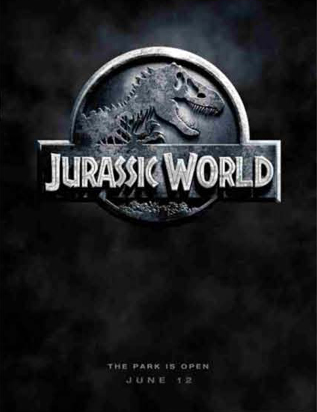What Might Dinosaur DNA Look Like?
Birds and Turtles Provide a Clue to Dinosaur DNA
Team members at Everything Dinosaur have noted that a number of news channels are covering the story concerning a team of British scientists who have “unpicked” dinosaur DNA and established what it looked like. Unsurprisingly, references are being made to “Jurassic Park/Jurassic World” and the possibility of having prehistoric animal safari parks sometime in the near future. As with a lot of science stories, things are not quite what they seem. Today, we shall endeavour to unravel the double helix behind these news releases and place everything into context.
Dinosaur DNA – Not a New Story
The scientific paper that the media is commenting upon was actually published several months ago, appearing in the academic journal “Nature Communications” as an open access article on the 21st May (2018).
Researchers from the University of Kent, in collaboration with scientists from the Natural History Museum (London), the Royal Veterinary College, Cambridge University and Iowa State University, examined the genomes of different species of birds and turtles and as a result, they were able to determine how the overall genome structure of a dinosaur might have looked like under a microscope. Lead author of the scientific paper, Professor Darren Griffin (School of Biosciences, University of Kent) has been studying this area of genetics, looking at the genomes of living species to infer information about extinct ancestors for several years now.
In essence, the researchers set out to extrapolate the possible genome structure of a shared common ancestor between birds and turtles that lived in the Late Permian (260 million years ago), many millions of years before the first dinosaurs evolved.
Extrapolating Dinosaur Genetic Information Based on the Genomes of Extant Descendants

Picture credit: Everything Dinosaur
Dinosaur DNA – It Started with a Chicken
The University of Kent team have been involved in an extensive and long-term programme of research as part of a group called the International Avian Phylogenomics Consortium, whose aim is to better understand the genetics of important domesticated birds such as the turkey, chicken and duck. Mapping the genome structure of several different types of bird has revealed that the chromosomes of chickens and turkeys have undergone the fewest number of changes compared to their ancient non-avian ancestor – a maniraptoran dinosaur.
Birds as living descendants of theropod dinosaurs were thought to have undergone a rapid burst of evolution after the extinction of the non-avian dinosaurs some 66 million years ago. However, the taxonomic relationship between modern groups of birds is confusing and the molecular details of how birds evolved into more than 10,000 different species today is poorly understood.
Professor Griffin and his team have established that bird genomes are distinctive in that they have more tiny microchromosomes than any other vertebrate group. These small packages of gene-rich material are thought to have been present in their dinosaur ancestors.
Attempts to De-engineer the Genetics
The scientific paper describing this earlier research was published back in 2014 in the journal BMC Genomics. The team found that the chicken has the most similar overall chromosome pattern to its avian dinosaurian ancestor. So if you were going to build a real-life “Jurassic Park” start with some domesticated fowls and attempt to de-engineer the genetics, reversing 60 million years plus of evolution, gene mutation and natural selection and you might, just might, end up with a dinosaur. Sadly, no!
Michael Crichton might have used this idea of genetic manipulation to create dinosaurs, but this technology does not permit you to build a dinosaur. However, by manipulating the DNA of a chicken embryo it is possible to reveal in that embryo some dormant characteristics and traits that reveal the bird’s dinosaurian ancestry. For example, researchers have been able to produce an extended pygostyle, turning on those genes once responsible for the formation of the dinosaur tail. In addition, manipulating the genetic information with the cells of a chicken embryo has led to the development of teeth in the jaws, a trait possessed by dinosaurs but lost by their avian descendants.
Skulls Showing How Genetic Information Can Be Manipulated Between Archosaurs

To read an article from 2009, that looks at attempts to reverse engineer the DNA of chicken embryos to create dinosaur characteristics: The “Dinochicken” Project.
Tracing How Chromosomes Have Changed Over Deep Time
The research team’s paper which is currently being commented upon by numerous media outlets (published in Nature Communications, May 2018), used sophisticated mathematical models to map how chromosomes changed over millions of years from a common reptile ancestor to the present day.
Commenting on the significance of this study, Dr Becky O’Connor, (University of Kent) stated:
“The technique used in this study allowed us to determine the genome structure of the turtle-bird ancestor. Turtles are one of the very few species that have similar looking chromosomes to birds. Until now, the tools required to compare their chromosomes were not available. In our study, we added fluorescent labels, called “DNA probes”, to the chromosomes of birds and turtles so that we could locate the stretches of DNA that match in the two species.”
Fluorescent DNA Probes
One of the key pieces of biotechnology that made this study possible was the development of a set of fluorescent DNA probes derived from birds that worked well on the chromosomes of turtles. Using these probes to identify similarities and differences in the genetic make-up of different, albeit related species, the scientists were able to trace the changes that took place in the DNA of the bird/turtle ancestor and plot the evolutionary path through the theropod lineage to the modern descendants of long extinct dinosaurs.
Dr O’Connor added:
“The process then involved tracing the changes that occurred from the bird-turtle ancestor. The evolutionary path examined the point when dinosaurs first emerged, through the theropod dinosaur line, and beyond several mass extinction events, including the most recent one 66 million years ago.”
The team found that, although the individual chromosomes rearranged their genes internally, this did not occur much at all between the chromosomes, what the scientists describe as “a significant discovery”.
A Dinosaur Production Line As Imagined in the Famous Movies
Picture credit: Masrani
Lots of Chromosomes Probably Equals Lots of Diversity
Living avian dinosaurs (birds) have a lot of chromosomes, most birds have around 80 chromosomes (40 pairs), compare this to our own species Homo sapiens which as 46 chromosomes (23 pairs). Having a lot of chromosomes may help to explain why the 10,000 species of birds around today are so diverse. The pattern of chromosomes (karyotype), in birds may therefore provide clues as to the huge variety of different dinosaurs (non-avian dinosaurs) that once existed.
If early dinosaurs and later theropods had similar numbers of chromosomes, then this genetic “richness” might explain why non-avian dinosaurs evolved into a myriad of different forms.
This research suggests that, if scientists could take DNA from a theropod dinosaur such as Velociraptor or even a Tyrannosaurus rex, the chromosomes might look very similar to that of a modern-day bird, remarkably similar in fact to that of a chicken or a turkey.
Buy Why Turtles When Studying Dinosaur DNA?
Testudines (turtles, tortoises and terrapins), are not that closely related to dinosaurs. In fact whether turtles are diapsids and therefore distantly related to dinosaurs and birds, or whether they are anapsids and only very remotely related to dinosaurs and birds is an area of debate. Most scientists agree that crocodiles are the closet living relatives to dinosaurs (crocodiles are diapsids and also archosaurs, just like dinosaurs). However, crocodilian DNA was not used in this research as the team found too many inconsistencies and a lack of success in using the fluorescent DNA probes with crocodilian genetic material.
Furthermore, the crocodilian species studied seemed to show an atypical archosaur karyotype with no microchromosome clusters mostly brought about by fusion.
To read an article from Everything Dinosaur about a new fossil discovery that demonstrates just how complicated turtle evolution is: Mosaic Evolution in Testudines – Turtle Evolution is Complicated.
Press Release
In a press release from the Natural History Museum, Dr Paul Barrett explained:
“Turtles aren’t closely related to dinosaurs, but they are one of the living groups of reptiles that can be used to study the relationships of dinosaurs and some of the features that they would have possessed. Birds are living dinosaurs and crocodiles are their next nearest relatives, followed by turtles, lizards and snakes.”
One thing the researchers are all agreed upon, this study reinforces the idea that birds are essentially living theropod dinosaurs and despite significant breakthroughs in our understanding of how genetic material might change over deep geological time, no-one is going to be genetically engineering dinosaurs any time soon.
There is Not Going to be a Real Life “Jurassic World” Anytime Soon
Picture credit: Universal Studios
The scientific paper:
“Reconstruction of the Diapsid Ancestral Genome Permits Chromosome Evolution Tracing in Avian and Non-avian Dinosaurs” by Rebecca E. O’Connor, Michael N. Romanov, Lucas G. Kiazim, Paul M. Barrett, Marta Farré, Joana Damas, Malcolm Ferguson-Smith, Nicole Valenzuela, Denis M. Larkin and Darren K. Griffin published in Nature Communications.
Visit the Everything Dinosaur website: Everything Dinosaur.



